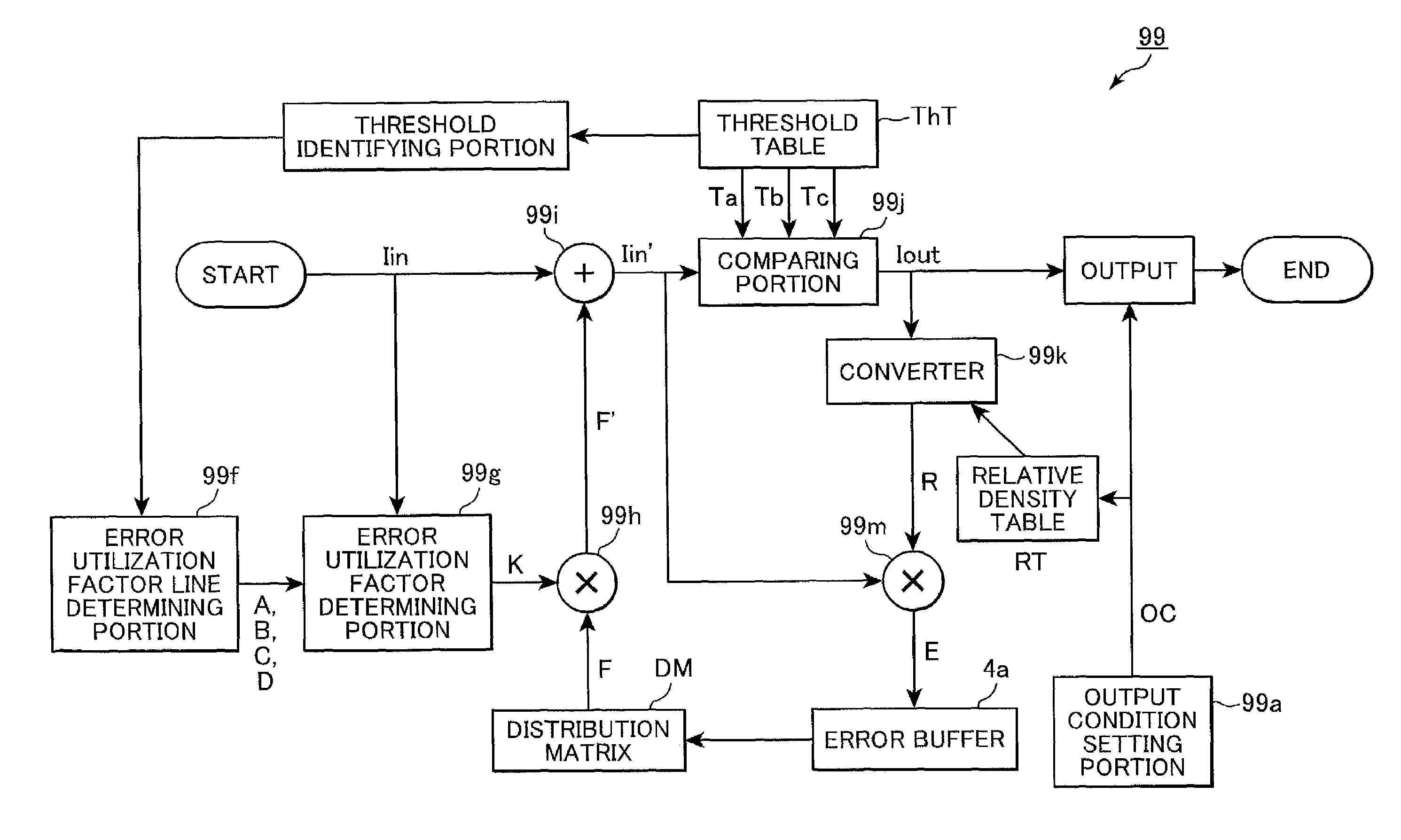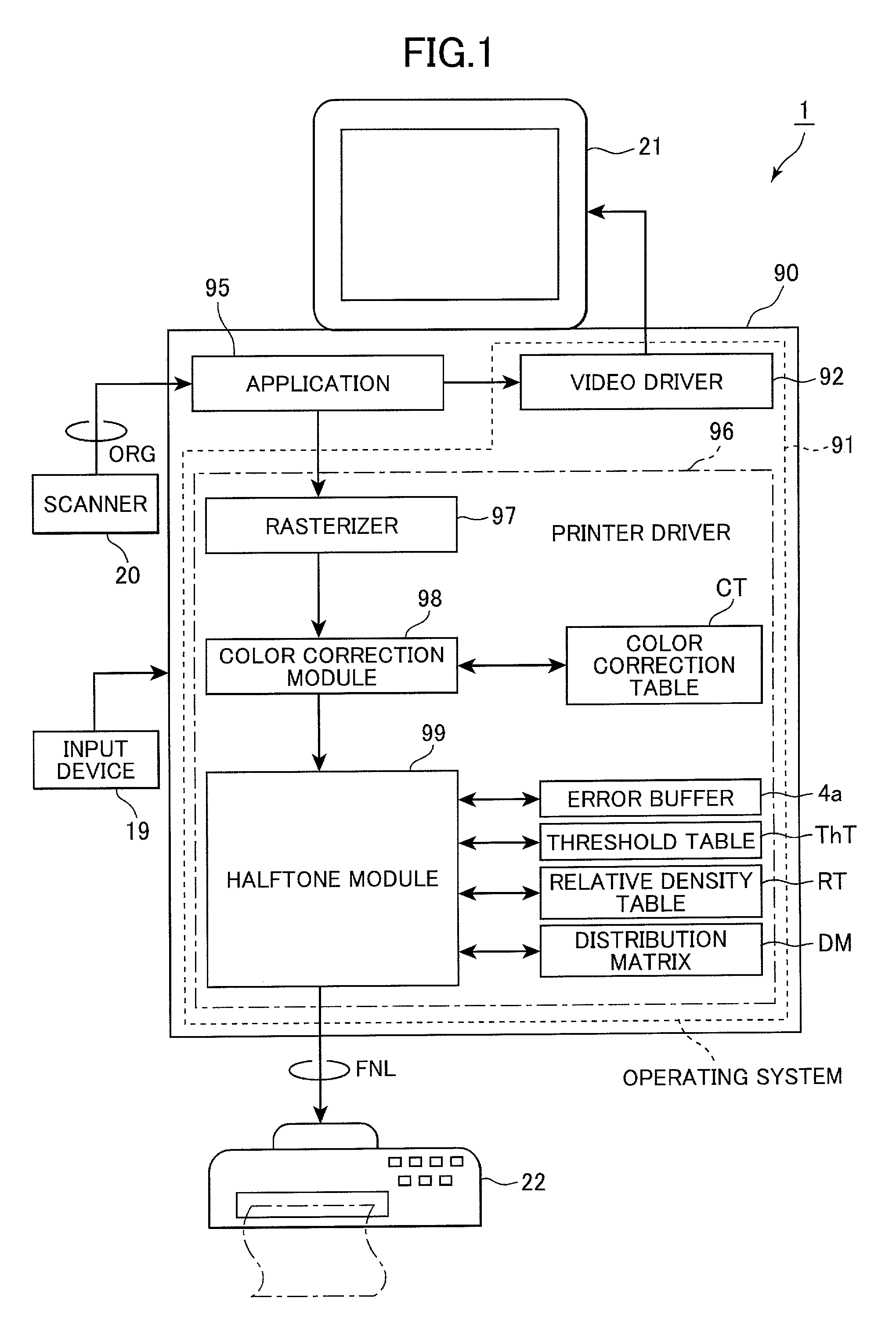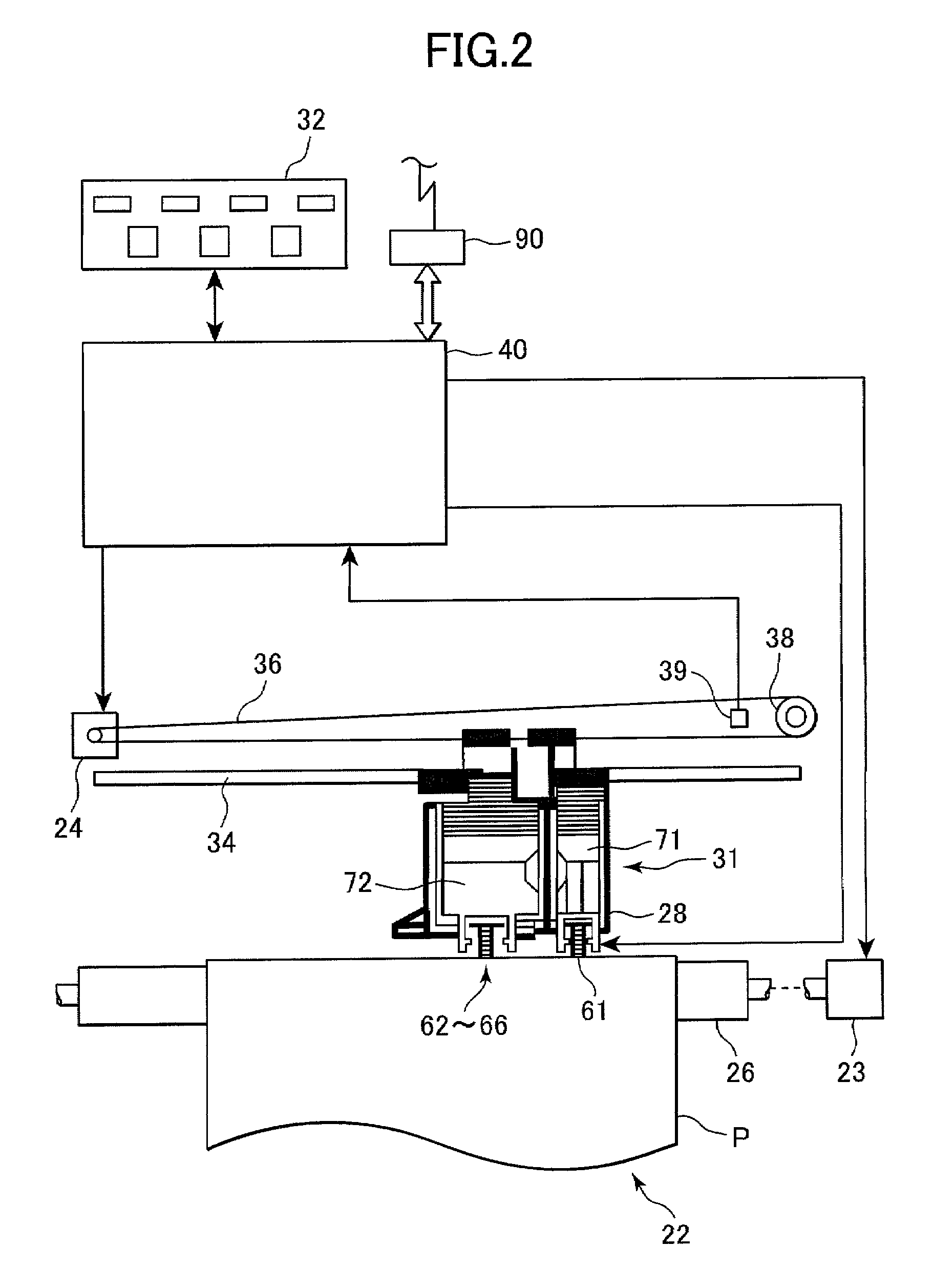Image processing device
a technology of image processing which is applied in the field of image processing device and image processing program, can solve the problems of generating recurrent patterns, wasting resources, and wasting resources,
- Summary
- Abstract
- Description
- Claims
- Application Information
AI Technical Summary
Benefits of technology
Problems solved by technology
Method used
Image
Examples
first embodiment
[0049]FIG. 1 shows the configuration of an image processing system 1 according to a first embodiment of the present invention. The image processing system 1 is constructed from: a personal computer 90, which is the image processing device of the present embodiment; and a color printer 22 which is an image forming device outputting an image processed by the personal computer 90.
[0050]As shown in FIG. 1, the image forming system 1 includes the personal computer 90 and, provided external to the personal computer 90, a scanner 20, the color printer 22, a color display 21, and an input device 19 such as a keyboard, mouse, and the like.
[0051]The external scanner 20 reads color image data from an original color print and supplies original color image data ORG to the personal computer 90. The original color image data ORG includes three color components: red (R), green (G), and blue (B).
[0052]When desiring to print images, the personal computer 90 generates, based on the original color imag...
second embodiment
[0163]Next will be described a second embodiment of the present invention with reference to FIGS. 9, 13, 14, 15(A), and 15(B).
[0164]As shown in FIG. 13, according to the present embodiment, the halftone module 99 is not provided with the image characteristic identifying portion 99b, but is provided with a recording characteristic identifying portion 99c. The recording characteristic identifying portion 99c is for identifying recording characteristics of the printer 22 based on the output conditions OC set by the output condition setting portion 99a. The error utilization factor line determining portion 99f determines characteristic values A, B, C, and D for each color component based on the identified recording characteristics.
[0165]Similarly to the first embodiment, the recording characteristic identifying portion 99c and the error utilization factor line determining portion 99f cooperate to determine the characteristic values A, B, C, and D and the error utilization factor line of...
first modification
of Second Embodiment
[0176]A first modification of the present embodiment will be described with reference to FIGS. 9, 13, and 16(A).
[0177]In this modification, the recording characteristic identifying portion 99c identifies, as the recording characteristics, printing resolution set for the present printing operation. The error utilization factor line determining portion 99f determines characteristic values A, B, C, and D for each color component based on the printing resolution.
[0178]According to the present modification, the hard disk device 10 previously stores therein a printing resolution-characteristic table PRT shown in FIG. 16(A). The printing resolution-characteristic table PRT lists up the characteristic values A, B, C, and D for each of several printing resolutions (200×200 and 800×800, in this example).
[0179]It is noted that humans perceive dots differently based on different printing resolutions. Accordingly, characteristic values A, B, C, and D are determined is beforeh...
PUM
 Login to View More
Login to View More Abstract
Description
Claims
Application Information
 Login to View More
Login to View More - R&D
- Intellectual Property
- Life Sciences
- Materials
- Tech Scout
- Unparalleled Data Quality
- Higher Quality Content
- 60% Fewer Hallucinations
Browse by: Latest US Patents, China's latest patents, Technical Efficacy Thesaurus, Application Domain, Technology Topic, Popular Technical Reports.
© 2025 PatSnap. All rights reserved.Legal|Privacy policy|Modern Slavery Act Transparency Statement|Sitemap|About US| Contact US: help@patsnap.com



